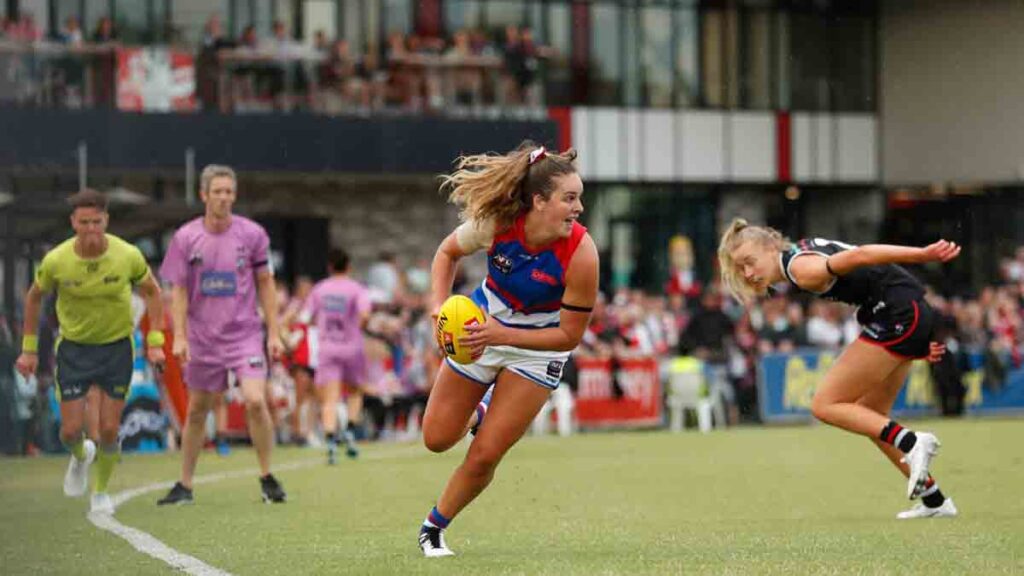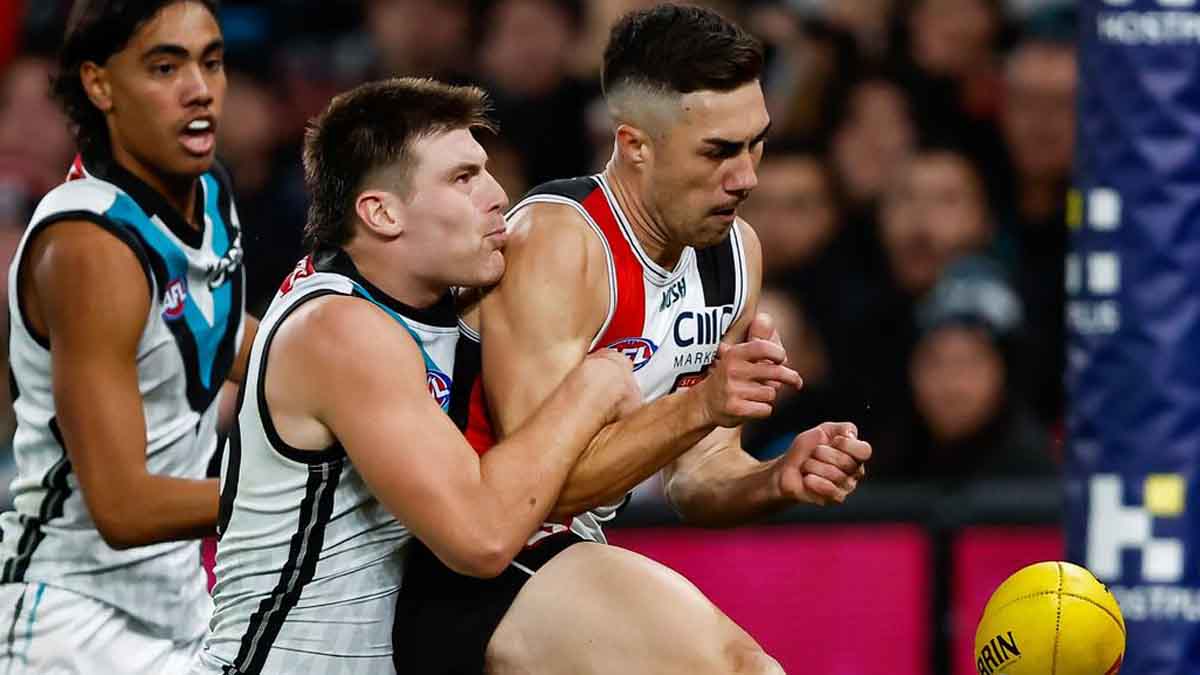
The Australian Football League Women’s (AFLW) exchange period is gearing up for an unprecedented shake-up as an 11-club mega trade is poised to make waves in the league. With the AFLW competition continuing to grow in popularity and competitiveness, teams are strategically maneuvering to secure the best talent and build formidable squads. This mega trade, involving nearly half of the AFLW clubs, promises to be a game-changer, reshaping team dynamics and setting the stage for an intriguing upcoming season.
AFLW has come a long way since its inception in 2017, with each passing season witnessing the evolution of team strategies, player acquisitions, and trading dynamics. The AFLW exchange period has become a crucial component of team building, allowing clubs to bolster their squads with established stars, emerging talents, and strategic draft picks.
The 11-club mega trade represents a significant departure from the usual one-on-one or two-club player exchanges, signaling the maturation and complexity of the AFLW competition. This unique trade, involving over half of the league’s teams, underlines the ambition and determination of clubs to create powerful and competitive rosters.
Several marquee players are rumored to be part of this groundbreaking mega trade, adding an extra layer of excitement and anticipation to the AFLW community. Star forwards, midfield maestros, and rock-solid defenders are all on the trading block, making this exchange period one of the most talked-about in the history of the league.
The involvement of key players in the mega trade also raises questions about the impact on team dynamics and the league’s overall balance. How will these star players adapt to new environments, and what kind of influence will they have on their new teams? These are just a couple of the intriguing questions that fans and pundits are eager to explore.
For some clubs, the mega trade is a strategic move aimed at rebuilding their squads and addressing specific weaknesses. Teams that struggled in the previous season may see this as an opportunity to reset and make a fresh start. The influx of new talent and experienced players can provide an immediate boost, creating a more competitive and well-rounded team.
On the other hand, successful teams may be looking to strengthen their depth, ensuring they have the necessary firepower to sustain a title challenge. The mega trade allows clubs to explore different avenues for improvement, whether through securing proven performers or investing in promising young talents.
Trading a substantial number of players between 11 clubs is bound to have a ripple effect on team cultures. Players accustomed to the dynamics, systems, and camaraderie of their former clubs will now need to adapt to new environments. The challenge for coaches and team leaders will be to integrate these incoming players seamlessly and create a cohesive unit that can perform at the highest level.
Team chemistry and culture are often cited as crucial elements in a successful sporting campaign. The mega trade adds an extra layer of complexity to this aspect, as multiple players navigate the transition simultaneously. How well teams manage this cultural shift will likely play a pivotal role in their success in the upcoming season.
Fans are the lifeblood of any sporting competition, and their reactions to the mega trade will be closely monitored. Excitement, skepticism, and anticipation are likely to be prevalent emotions as supporters assess the impact of the trade on their favorite teams. Social media platforms will undoubtedly be abuzz with discussions, predictions, and analyses as fans share their opinions on the mega trade.
The expectations for teams involved in the mega trade will also be heightened. Supporters will be eager to see immediate results and improvements, and the pressure will be on players and coaching staff to deliver. The AFLW has a passionate and engaged fan base, and their reactions to this unprecedented mega trade will add an extra layer of drama to the upcoming season.
Beyond the individual clubs involved, the 11-club mega trade has broader implications for the entire AFLW competition. The redistribution of talent among teams could lead to a more evenly contested league, with no clear favorites emerging. This level of parity can contribute to a more exciting and unpredictable season, capturing the attention of a wider audience.
Additionally, the mega trade may prompt other clubs to reassess their strategies and make bold moves in response. As teams witness their rivals strengthening through strategic player acquisitions, they may feel compelled to explore similar avenues to remain competitive. This domino effect could result in a flurry of activity during the AFLW exchange period, further reshaping the league landscape.
For the players involved in the mega trade, this represents both a challenge and an opportunity. Leaving familiar surroundings and teammates can be emotionally taxing, but it also opens the door to new experiences, challenges, and growth. Players will need to quickly adapt to the playing style and culture of their new clubs, forging new connections with teammates and coaching staff.
On the flip side, the mega trade presents an opportunity for players to showcase their versatility and impact on different teams. Those who successfully navigate the transition and make a positive impression in their new environments could see their stocks rise, establishing themselves as key figures in the league.
The mega trade is not only about established players changing clubs but also about the future prospects that clubs will acquire through draft picks. The AFLW Draft becomes a crucial aspect of this trade, as teams aim to secure talented young players who can be developed into future stars. The strategic use of draft picks can set the foundation for sustained success, and clubs will be carefully weighing their options to ensure they maximize their selections.
The influx of new talent through the draft adds an extra layer of excitement and intrigue to the AFLW, as fans and experts speculate on the potential of young prospects and how they might shape the league’s future.
The magnitude of the 11-club mega trade raises questions about the existing regulations and governance surrounding player exchanges in the AFLW. As the league continues to grow and evolve, discussions will likely ensue regarding potential adjustments to trade rules, salary caps, and other relevant policies.
The AFLW administration will need to closely monitor the outcomes of this mega trade and assess its impact on the competitive balance of the league. Adjustments to trade regulations may be necessary to ensure the continued growth and sustainability of the AFLW competition.
The 11-club mega trade is sure to dominate media coverage in the lead-up to the AFLW season. Sports journalists, pundits, and analysts will dissect every aspect of the trade, offering insights, predictions, and opinions. This heightened media attention not only generates excitement but also brings increased visibility to the AFLW, attracting new fans and supporters.
Public interest in the league is likely to surge as the mega trade unfolds, with casual observers and dedicated fans alike tuning in to see how their favorite teams have restructured their rosters. The AFLW has been gaining momentum as a prominent sporting competition, and the mega trade further cements its status as a major player in Australian sports.
The 11-club mega trade is poised to be a defining moment in the history of the AFLW, ushering in a new era of strategic team building and competitive balance. As clubs reposition themselves for success, players embark on fresh challenges, and





